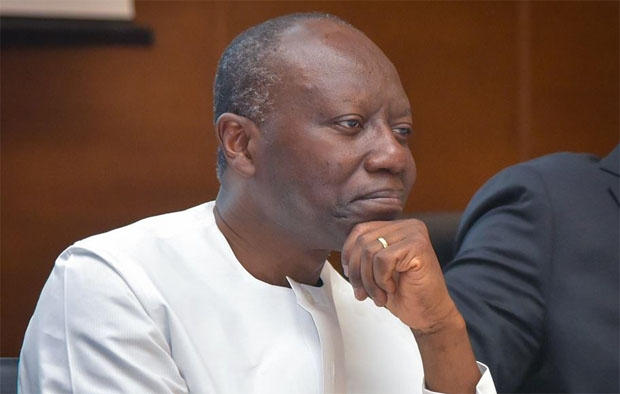The government’s indebtedness to various pension schemes as of the end of May this year stands at GH¢2.63 billion, the Minister of Finance, Ken Ofori-Atta, has told Parliament.
The amount breakdown was Tier One pensions of the Controller and Accountant General’s Department mechanised payroll of GH¢1.62 billion, Tier One of subvented institutions GH¢188.59 million, Tier Two of mechanised payroll GH¢808.21 million and Tier Two of subvented institutions GH¢6.18 million.
“Mr Speaker, the government paid GH¢2.67 billion to various pension schemes in 2022. Between January and the end of May 2023, the government had also paid GH¢2.26 billion,” he said.
Urgent question
The Finance Minister disclosed this in a statement read on his behalf by the Minister of State at the Ministry of Finance, Dr Amin Adams, on the floor of Parliament last Tuesday.
He was responding to an urgent question by the Member of Parliament for Tamale South, Haruna Iddrisu, who sought to know how much was owed the various pension schemes, including the Social Security and National Insurance Trust (SSNIT) by the Government of Ghana (GoG).
On the question of whether pension contributions were released on time and invested, Dr Adams stopped short of answering on the time the pension was released, saying that “I will get the answers and report back to the House”.
McKinsey contract
The minister also took a question from the National Democratic Congress (NDC) Member of Parliament (MP) for Tamale North, Suhuyini Alhassan Sayibu, who asked whether the Ghana Revenue Authority’s 24-month contract of about $18.24 million between McKinsey & Company Inc. Ghana, achieved the overarching aim of increasing tax revenue substantially over and above the baseline of 17 per cent year-on-year growth.
Responding, Mr Ofori-Atta said the overarching target of 17 per cent year-on-year growth was exceeded and the total revenue growth recorded was 28 per cent year-on-year.
He said revenue mobilisation remained a challenge for the government.
Until McKinsey & Co. came in to assist, the tax-to-gross domestic product (GDP) ratio averaged 13 per cent, which was lower than the average 18 per cent for the sub-region.
“Therefore, unlocking the full potential of our domestic revenue mobilisation is one that is at the core of the President’s vision of a Ghana Beyond Aid,” he said.
He told the House that McKinsey was engaged to support the government’s efforts to increase tax revenues over the baseline of 17 per cent year-on-year growth and other interventions to increase efficiency and effective work culture.
“Mr Speaker, GRA’s total payment to McKinsey over the contract period of 2018-2022 was $12.2 million,” he stated.
In terms of performance, the minister said the collaboration between GRA and McKinsey resulted in an increase in revenue from GH¢38 billion in 2018 to GH¢75.5 billion in 2022, a cumulative average of about 19 per cent over the period.
Tax performance
Mr Ofori-Atta indicated that not only did McKinsey help the government to increase its revenue but it also helped lead a cultural shift and professionalism, including the use of enhanced performance appraisal and analytical tools, which would anchor significant improvement in revenue mobilisation.
Despite the very good results, and Ghana’s current tax-to-GDP ratio rising from 12.1 per cent in 2016 to 13.8 per cent as of the end of 2022, “our revenue performance is still one of the lowest in the sub-region,” Mr Ofori-Atta added.
He said the country’s peer countries were collecting an average of 18 per cent while Organisation for Economic Co-operation and Development countries were achieving about 34 per cent.
The Finance Minister said there was evidence that Ghana had enormous capacity to double its tax revenue and at the very minimum, be at par with its peers without introducing new taxes.
In line with such an ambition, Mr Ofori-Atta pointed out that the government was leveraging digitalisation, including initiatives such as E-invoicing, E-VAT, E-Levy and Ghana.gov to expand the tax net, eliminating leakages and closing the tax gap.
“Results from the pilot phase of the E-VAT and E-invoicing, supplemented by physical monitoring by the staff of GRA are truly revealing. The initial results have emboldened us to expand the coverage to other targeted entities,” he said.



